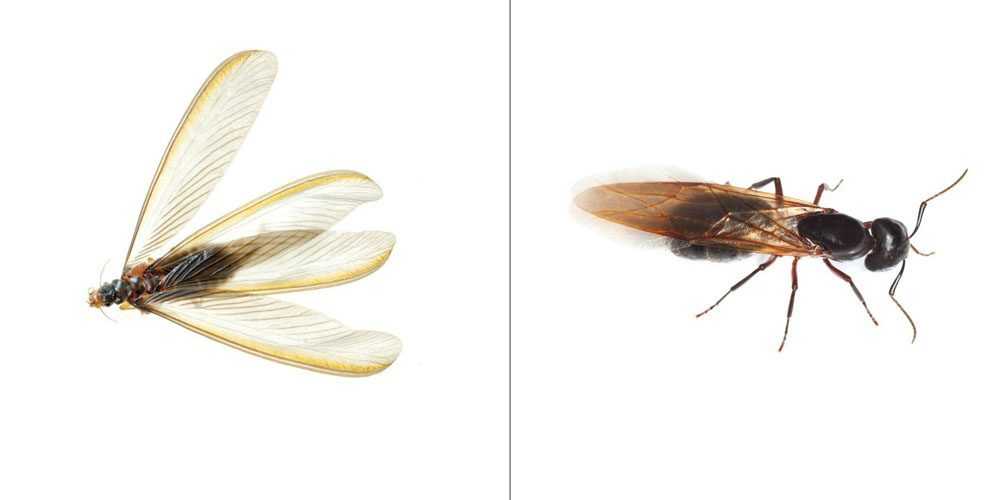Termite swarmers and flying ants look similar and both attack wood, but they aren’t the same pest. If you’re seeing winged pests near your home, it’s important that you correctly identify them so that you can treat the problem, appropriately. In this blog post, we’ll talk about the differences between termites vs flying ants and offer ways you can handle an infestation.
Flying Ants
Flying ants, also referred to as ant swarmers, have small waists, bent antennae, and two sets of wings — with the larger-sized wings located in the front. Ant swarmers develop wings and fly away to create new colonies once their existing one matures. One particular species of ants that mimic termites in terms of wood damage is the carpenter ant. Carpenter ants are typically black and larger than most ants in the Pacific Northwest.
Queens can range in size from 16 to 18 millimeters long, while workers range in size between 6 and 13 millimeters long. These winged swarmers will feed on seeds, nectar, insects, and any food you have in the home.
Carpenter ant swarmers can be very destructive to wooden structures, furniture, and woodpiles. These pests don’t actually eat wood, they excavate it to expand their nests. They mostly favor moist or rotting wood but may also infest dry wood.
Termites and Termite Swarmers
Subterranean termites are the most destructive termite in the country and live throughout most of the continental US. Subterranean termite colonies are comprised of workers, soldiers, and of course, swarmers.
Workers
Workers are typically cream-colored and wingless. They’re commonly present where infested wood is broken open or foraging mud tubes.
Soldiers
Soldiers are cream-colored and wingless like workers, but also have large brown heads. They defend the queen and colony from any outside threats using their large jaws.
Swarmers
Swarmers are nearly black and have two wings that are twice as long as their body. When a termite colony reaches its maximum capacity, termite swarmers develop wings and leave the colony to build a new one. Once they’ve found an ideal spot, they discard their wings and start chewing their way into the wood.
When is termite swarmer season?
Keep an eye out for termite swarmers in the spring. Warm weather and a light breeze are perfect conditions for these traveling pests. If you leave windows open during the day, you may even find swarmers or their discarded wings in your house. If you suspect you have a developing termite issue, contact PURCOR.
Are termite swarmers attracted to light?
Absolutely. At night, termite swarmers will gather around streetlights and porch lights. In addition to being a nuisance while you try to enjoy an evening on the patio, termite swarmers drawn to your outdoor lights may also invite themselves inside.
How to Get Rid of Termite Swarmers or Flying Ants
Termite swarmers tend to be present during early spring when it’s rainy and warm, while carpenter ant swarmers ants can appear any time of the year. If you suspect you have termite or ant swarmers, or find signs of their damage on your property, you’ll want professional help. Both of these pests are highly destructive and resilient.
Treatment options vary, and having a certified pest control technician develop a customized treatment plan for you will go a long way toward providing you peace of mind. Contact PURCOR to receive a free pest control estimate today!
"*" indicates required fields
"*" indicates required fields




